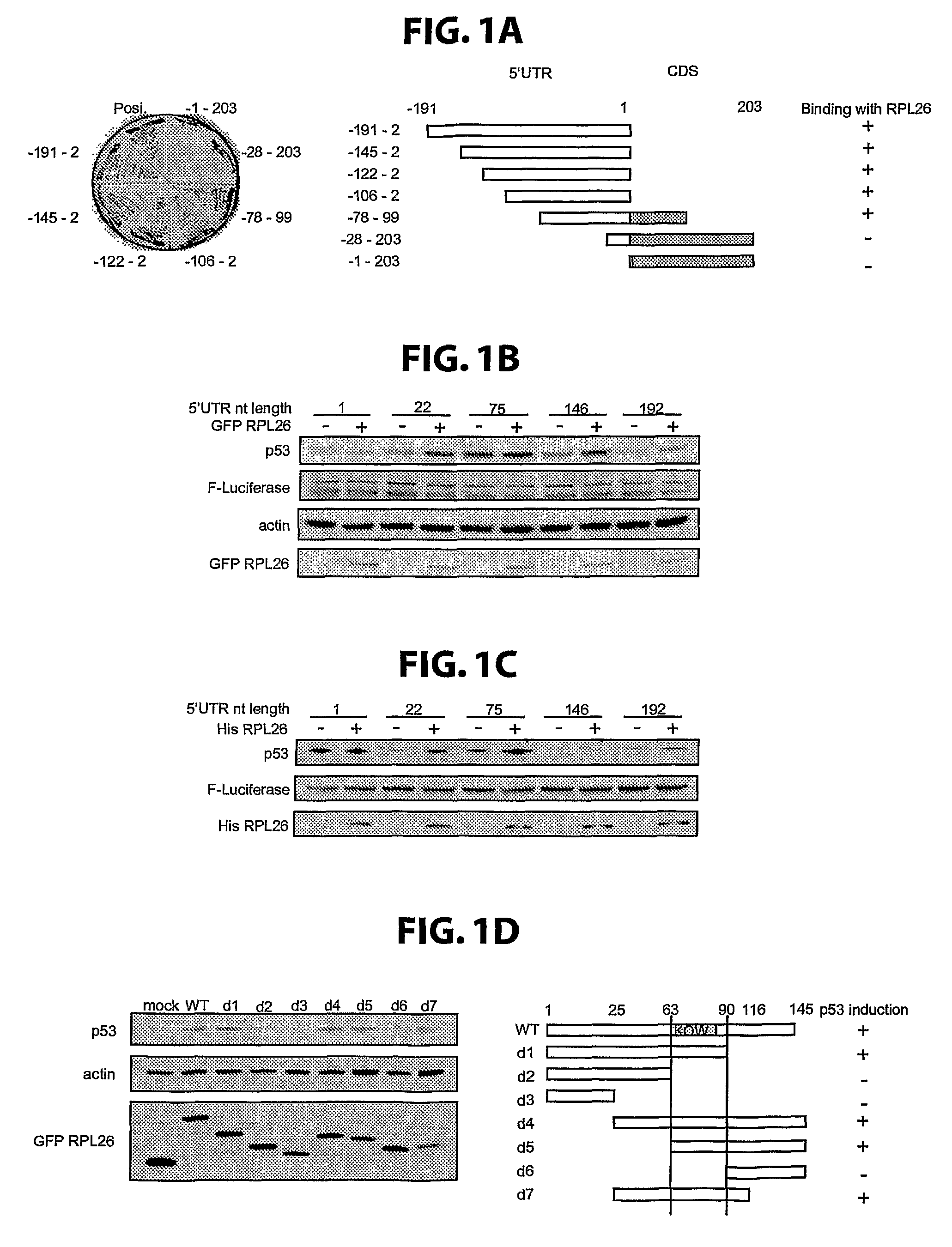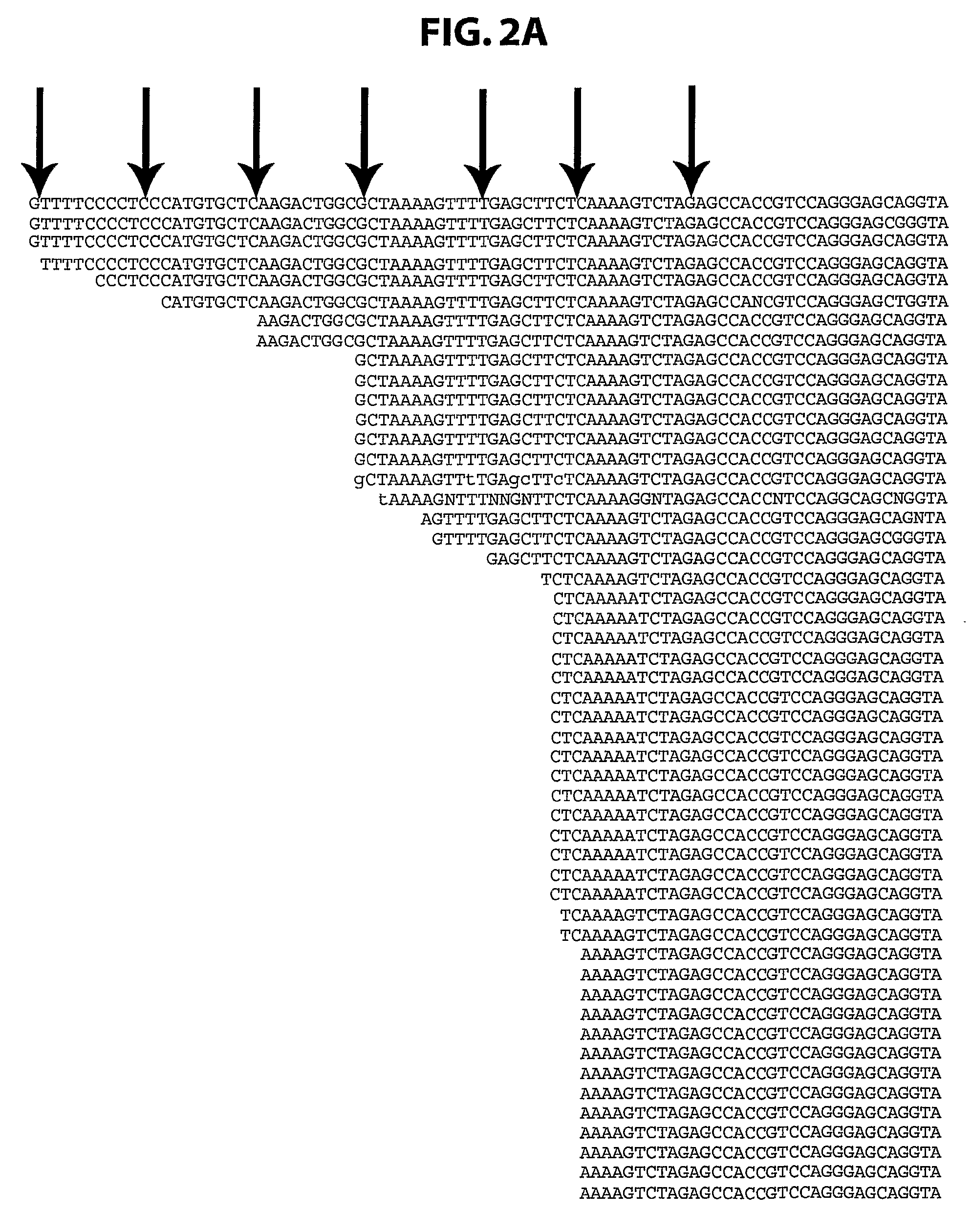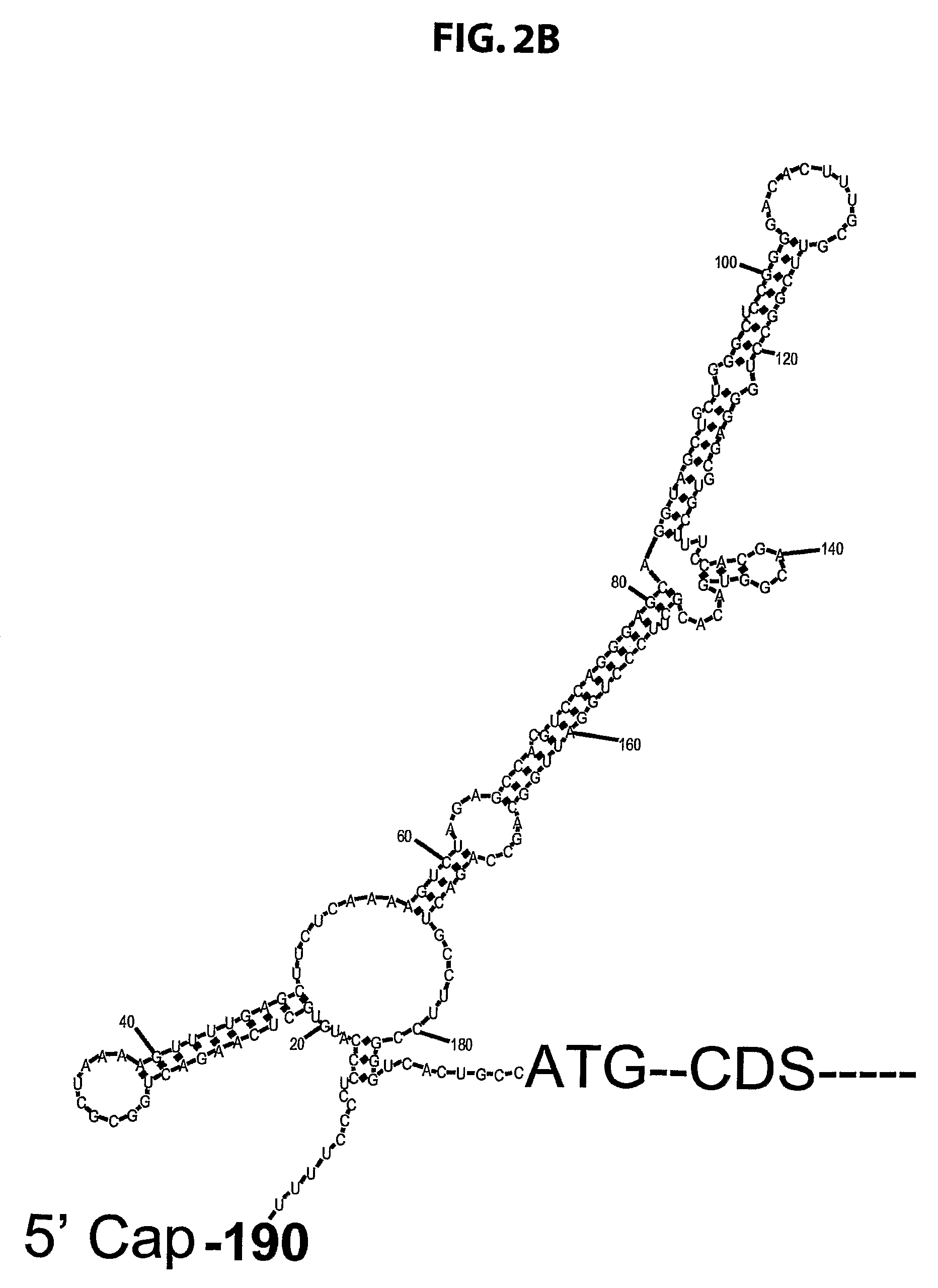Methods for regulation of p53 translation and function
a p53 and translational technology, applied in the direction of peptide/protein ingredients, peptides, genetic material ingredients, etc., can solve the problems of dna damage, failure to induce appropriate growth arrest or apoptosis, and decrease in fidelity, so as to reduce or eliminate p53-dependent neuronal death, suppress tissue aging, and reduce or eliminate neuronal damage
- Summary
- Abstract
- Description
- Claims
- Application Information
AI Technical Summary
Benefits of technology
Problems solved by technology
Method used
Image
Examples
example 1
Regulation of p53 Translation and Induction of p53 after DNA Damage by Ribosomal Protein L26 and Nucleolin
Methods
[0144]Plasmids. PCR-amplified RPL26 cDNA was subcloned into an EGFP expression vector, pEGFP-C3 (Clontech; BD Biosciences, Franklin Lakes, N.J.), and into a His tag-carrying vector, pET-15b (Novagen; EMD Biosciences, San Diego, Calif.) to obtain the RPL26-expressing plasmids pEGFP-C3-RPL26 and pET-15b-His-RPL26. PCR-amplified GFP and RPL26 cDNA were subcloned into pMSCV puro vector (Clontech), a murine stem cell virus vector carrying the puromycin-resistance gene. This cDNA was also subcloned by PCR amplification using a FLAG-tagged forward primer, into pIRES2-EGFP (Clontech) to generate FLAG tagged RPL26 driven by a CMV promoter.
[0145]RPL26 fragments d1-d7 were generated by PCR using pEGFP-RPL26 as a template and were subcloned into XhoI / EcoRI site (except for d4 which was produced by self-ligation of the PCR product) of EGFP expression vector pEGFP-C3 (Clontech).
[0146]
A...
PUM
| Property | Measurement | Unit |
|---|---|---|
| molecular weight | aaaaa | aaaaa |
| molecular weight | aaaaa | aaaaa |
| molecular weight | aaaaa | aaaaa |
Abstract
Description
Claims
Application Information
 Login to View More
Login to View More - R&D
- Intellectual Property
- Life Sciences
- Materials
- Tech Scout
- Unparalleled Data Quality
- Higher Quality Content
- 60% Fewer Hallucinations
Browse by: Latest US Patents, China's latest patents, Technical Efficacy Thesaurus, Application Domain, Technology Topic, Popular Technical Reports.
© 2025 PatSnap. All rights reserved.Legal|Privacy policy|Modern Slavery Act Transparency Statement|Sitemap|About US| Contact US: help@patsnap.com



